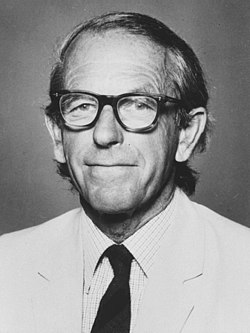Frederick Sanger Quote
Related Quotes
Japanese universities have a chair system that is a fixed hierarchy. This has its merits when trying to work as a laboratory on one theme. But if you want to do original work you must start young, and...
Kenichi Fukui
Tags:
business, chair system, chemistry, difficult, effort, hierarchy, industry, japan, laboratory, merit
Should the research worker of the future discover some means of releasing this [atomic] energy in a form which could be employed, the human race will have at its command powers beyond the dream of sci...
Francis William Aston
Tags:
atom, atomic bomb, atomic power, catastrophe, destruction, earth, energy, experiment, explosion, humanity
When I realized that my home was completely filled with a biologically toxic radio wave field, I decided that the best route forward was to milk the home for all of the biological research that I coul...
Steven Magee
Tags:
biological, biological complexity, biological terrorism, biology, field, fields, fill, filled, forward, forwards
I could doubt the value of my books as much as many do, except that, as a researcher and very curious person, I do read a lot too, and can clearly see the difference in value between what I do and wha...
Robin Sacredfire
Tags:
altruism, author, authors, authorship, daniel marques, freemasonry, illuminati, kindness, positivism, research
About Frederick Sanger
Frederick Sanger (; 13 August 1918 – 19 November 2013) was a British biochemist who received the Nobel Prize in Chemistry twice.
He won the 1958 Chemistry Prize for determining the amino acid sequence of insulin and numerous other proteins, demonstrating in the process that each had a unique, definite structure; this was a foundational discovery for the central dogma of molecular biology.
At the newly constructed Laboratory of Molecular Biology in Cambridge, he developed and subsequently refined the first-ever DNA sequencing technique, which vastly expanded the number of feasible experiments in molecular biology and remains in widespread use today. The breakthrough earned him the 1980 Nobel Prize in Chemistry, which he shared with Walter Gilbert and Paul Berg.
He is one of only three people to have won multiple Nobel Prizes in the same category (the others being John Bardeen in physics and Karl Barry Sharpless in chemistry), and one of five persons with two Nobel Prizes.
He won the 1958 Chemistry Prize for determining the amino acid sequence of insulin and numerous other proteins, demonstrating in the process that each had a unique, definite structure; this was a foundational discovery for the central dogma of molecular biology.
At the newly constructed Laboratory of Molecular Biology in Cambridge, he developed and subsequently refined the first-ever DNA sequencing technique, which vastly expanded the number of feasible experiments in molecular biology and remains in widespread use today. The breakthrough earned him the 1980 Nobel Prize in Chemistry, which he shared with Walter Gilbert and Paul Berg.
He is one of only three people to have won multiple Nobel Prizes in the same category (the others being John Bardeen in physics and Karl Barry Sharpless in chemistry), and one of five persons with two Nobel Prizes.
